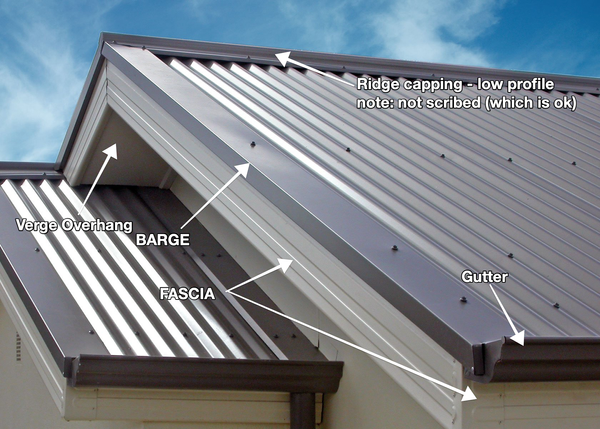Introduction
In the ever-evolving world of residential construction, the age-old nemesis of quality issues often plays the villain, leaving a trail of budget overruns, missed deadlines, and less-than-thrilled clients.
Enter Six Sigma, a hero of sorts in the quality management saga. But can this hero, born in the manufacturing sector, adapt its powers to the unique challenges of residential construction?
Let's look into this possibility, as we discover a tale of precision, efficiency, and perhaps a few less construction headaches.
Understanding Six Sigma
Six Sigma, often shrouded in the mystique of corporate jargon, is actually a straightforward concept at its core. Originating in the 1980s at Motorola, it emerged as a method to reduce defects in manufacturing processes. The central idea? If you can measure how many "defects" your process creates, you can systematically figure out how to eliminate them and get as close to "zero defects" as possible.
At the heart of Six Sigma lies the DMAIC process - Define, Measure, Analyze, Improve, and Control.
This is not just a fancy acronym; it's a road map for improvement. In the construction context, this could mean defining what quality looks like for a project, measuring current performance, analysing data to identify root causes of issues, improving processes based on analysis, and controlling future project performance with these new standards.
Applying Six Sigma to residential construction isn't just about reducing the odd measurement mishap; it's about creating a culture of continuous improvement and excellence. In an industry where a small error can lead to significant reworks or safety concerns, the meticulousness of Six Sigma can be a game-changer.
The Plight of Quality in Residential Construction
The residential construction arena is no stranger to the domino effect of quality issues. It starts small - a delayed material shipment, a miscalculation on the blueprint, perhaps a hurried workmanship under time pressure. But soon, these minor slips snowball into massive headaches: cost overruns, extended timelines, and the biggest casualty - customer trust and satisfaction.
Take, for instance, the classic case of a foundation not laid to the precise specifications. It might seem like a minor deviation at first, but as the construction progresses, this 'small' error magnifies, affecting everything from structural integrity to finishing work. The result? A series of reworks, increased costs, and a tarnished reputation in an industry where word-of-mouth can make or break future opportunities.
This reality paints a rather grim picture but also highlights a crucial opportunity. An opportunity for a systematic approach like Six Sigma to not just rectify but revolutionise the way quality is perceived and achieved in residential construction.
Six Sigma in Action: Case Studies
Let's bring this concept to life with some real-world examples. Imagine a residential construction project plagued by repeated delays due to material shortages. By implementing Six Sigma's DMAIC approach, the project team identifies the root cause: inefficient supply chain management. They then streamline the procurement process, establish more reliable supplier relationships, and voila - material shortages become a tale of the past, project timelines are met, and costs are kept in check.
In another scenario, a construction company faces consistent issues with electrical wiring in their projects. Through Six Sigma's analytical tools, they discover a pattern of errors occurring at a specific stage of the wiring process. By training the workforce and adjusting the process, the error rate drops dramatically, leading to safer, higher-quality homes and a significant reduction in rework costs.
These stories aren't just about fixing problems. They're about a proactive approach to quality, transforming processes, and setting new benchmarks in an industry traditionally reactive to quality issues.
Implementing Six Sigma in Your Construction Projects
Adopting Six Sigma in residential construction might seem daunting, but it's less about reinventing the wheel and more about fine-tuning it. Here's a practical guide to get you started:
Step 1: Define Quality Objectives - What does quality mean for your project? Is it on-time delivery, zero defects, customer satisfaction, or all of the above? Clearly defining your objectives sets a solid foundation for your Six Sigma journey.
Step 2: Measure Current Performance - You can't improve what you don't measure. Conduct an audit of your current projects. How often are deadlines met? What's the defect rate? Understanding these metrics is key.
Step 3: Analyze Data for Insights - Dive into the data. Are there recurring issues in certain project stages? Are some subcontractors consistently underperforming? Identifying patterns and root causes is crucial.
Step 4: Implement Improvements - Based on your analysis, make changes. This might involve new procurement strategies, enhanced training for your team, or adopting new technologies for better efficiency.
Step 5: Control and Monitor - Implement control mechanisms to ensure the improvements are sustained. Regular reviews, updated standard operating procedures, and continuous training are part of this phase.
Remember, Six Sigma is not a one-off project; it's a cultural shift towards ongoing excellence. Start small, perhaps with a pilot project, and gradually embed these principles into your organisational DNA.
Conclusion
As we wrap up this look into the world of Six Sigma and residential construction, it's clear that quality isn't just a buzzword - it's the backbone of successful projects and satisfied clients. Embracing Six Sigma is not just about solving existing problems; it's about preempting them, ensuring each project is a step towards perfection.
So, whether you're a construction professional or new to the field, consider this your call to action. Dive into the world of Six Sigma, embrace its principles, and watch as your projects transform from good to exceptional.
Key Article Takeaways
- Six Sigma offers a systematic approach to tackle quality issues in residential construction.
- Key principles include Define, Measure, Analyse, Improve, and Control (DMAIC).
- Real-world case studies demonstrate significant improvements in project delivery and cost efficiency.
- Implementing Six Sigma involves setting clear quality objectives, measuring performance, analysing data, implementing improvements, and ensuring ongoing control.
Frequently Asked Questions
Q: Can Six Sigma be applied to small-scale residential projects?
A: Absolutely! Six Sigma's principles are scalable and can bring value to projects of any size.
Q: How long does it take to see results from Six Sigma?
A: While some improvements can be immediate, Six Sigma is a long-term strategy aiming for continuous improvement over time.
Q: Do I need a Six Sigma certification to implement it in my projects?
A: No, but understanding its principles helps. Consider getting key team members certified for better implementation.







